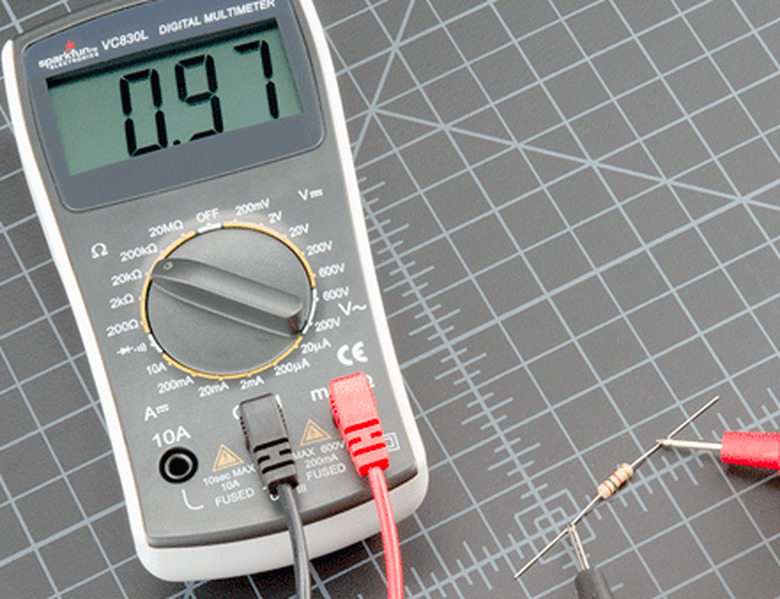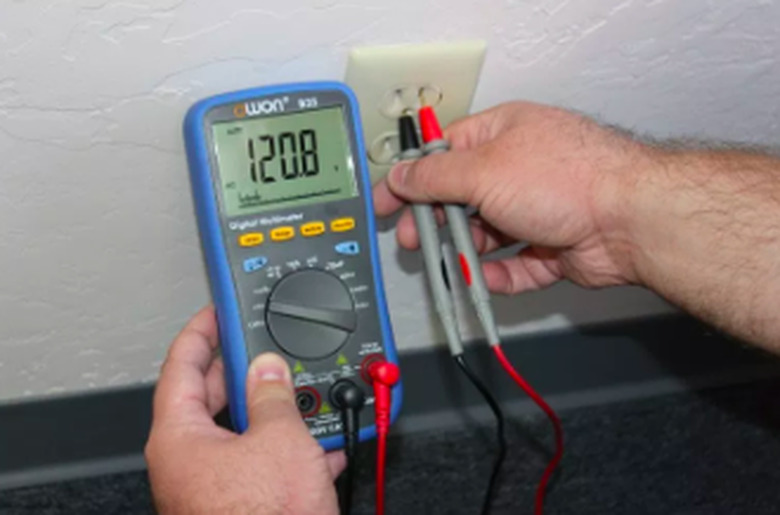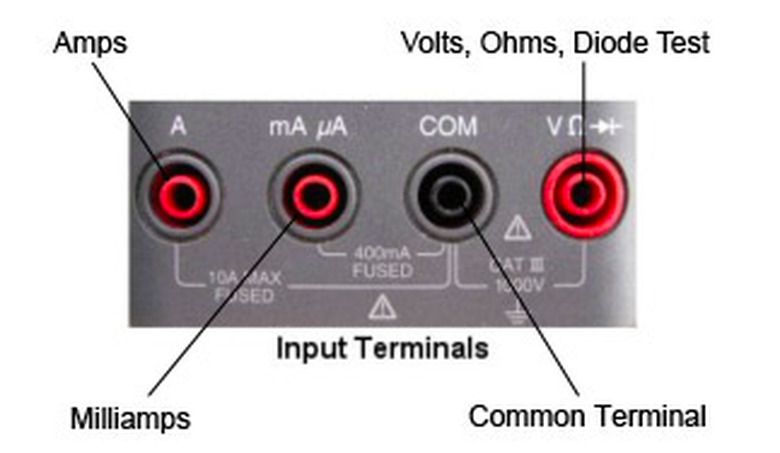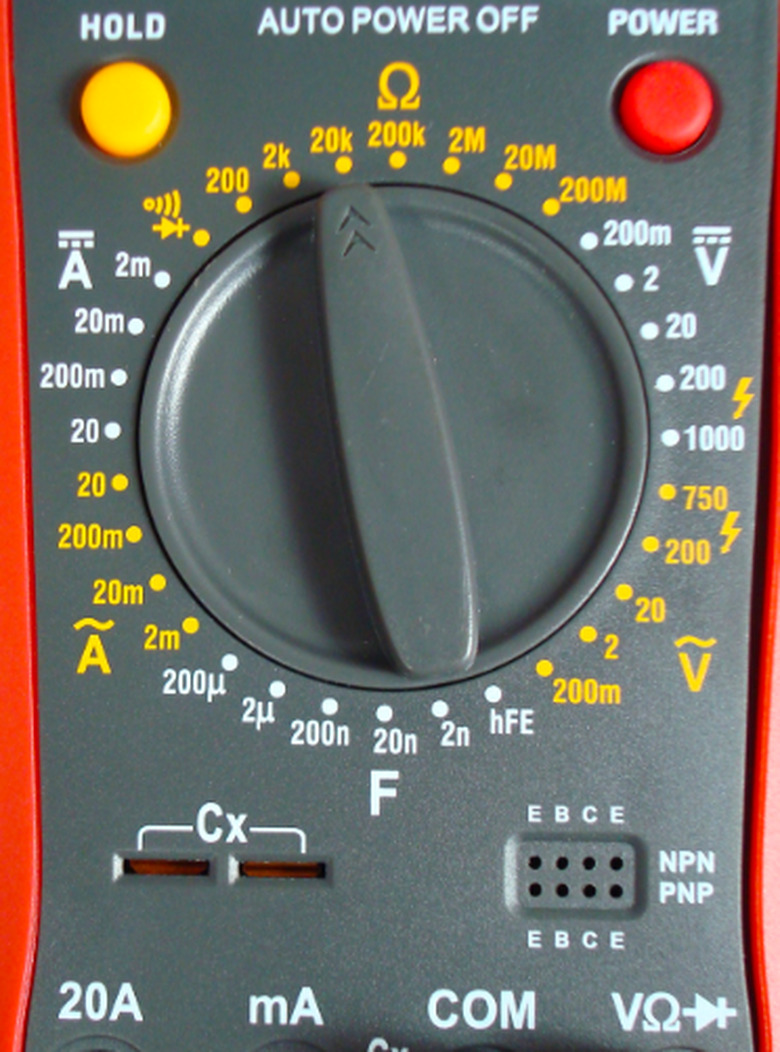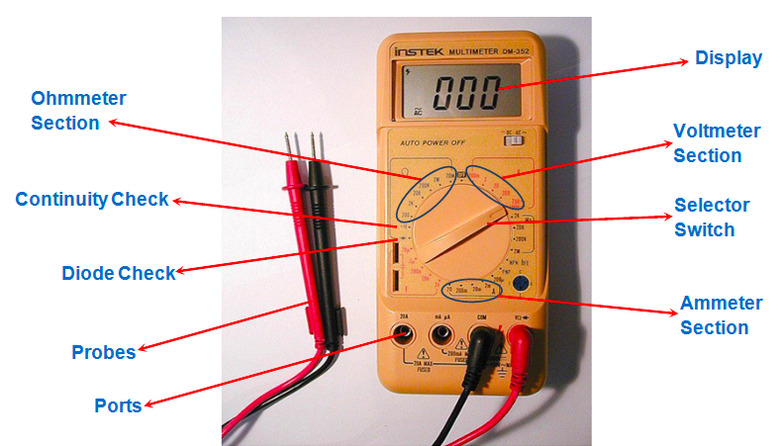What Is A Multimeter?
Devices for measuring electrical voltage, current and resistance have been around since the time of Michael Faraday, the physicist who discovered electromagnetic induction in the early 1800s. Faraday measured voltage and current using a galvanometer, a device that employed an induction coil to move a measurement needle. The principle of induction could also be used to measure _resistance_—the amount electrical current is reduced by the material it flows through—by supplying a small current of known value across a load and measuring the change in current.
It wasn't until 1920 that these three functions were incorporated into a single device. That's when British Post Office engineer Donald Macadie introduced the avometer (AVO stood for amperes, volts and ohms ). It was an analog device that employed a moving needle, and its design wasn't much different than that of a modern analog multimeter. With the advent of solid-state circuitry, it was just a matter of time before a digital multimeter came on the market. That happened in 1977, when Fluke released the 8020A digital multimeter.
Today, both analog and digital multimeters are widely available, and no one working in any electronics or electrical field would be without one. It's an indispensable tool for troubleshooting electric circuits. And it isn't just electricians who need multimeters. Contractors, handy people, homeowners and anyone who does electrical work around the house should have one for diagnosing problems and testing circuits. A multimeter is also essential for diagnosing appliance malfunctions, testing automobile circuitry and a host of other purposes.
Why You Need a Multimeter
Why You Need a Multimeter
If you work in the electronics industry or are an electrician, no one needs to tell you why you need a multimeter. If you're a homeowner or handy person, however, you probably won't use an electrical measuring device every day, and the need for one may not be immediately apparent. But keep a multimeter in the tool closet and you'll be surprised by how often you use it. Here are just a few situations in which a multimeter will come in handy:
- Testing outlets: When an appliance doesn't seem to be working, you can set the multimeter to test voltage and insert the leads into the receptacle slots. If the multimeter shows no voltage at all, you know you have a circuit problem that is preventing the flow of current. Or, you may find that moving the probes around causes the meter to jump, which means the outlet needs to be replaced. On the other hand, you might get a voltage reading, but one much smaller than it should be—this points to a circuit defect that needs attention.
- Appliance repair: Modern appliances are full of sensitive circuit elements that can go bad. When an appliance malfunctions, a multimeter is the go-to tool for zeroing in on the component that's causing the problem.
- Testing batteries and light bulbs: Got a drawerful of old batteries or incandescent light bulbs? Use the voltmeter function to test the batteries to determine which ones are good and which ones you should throw away. Set the meter to measure continuity or resistance to test the light bulbs. Infinite resistance or a negative continuity result means the bulb is no good.
- Testing switches: If you think a switch is bad, you can use the ohmmeter function on the multimeter to test it. Shut off the circuit breaker and disconnect the switch, then set the meter to measure resistance a and touch the probes to the switch terminals. When the switch is open, the resistance should be close to zero. If resistance is very high, it's time for a new switch.
Selecting Ports on a Multimeter
Selecting Ports on a Multimeter
Multimeter models vary somewhat among manufacturers, but the basic design is always the same. A pair of testing leads—one black and one red—connect to the input ports. There are usually four ports, and the ones you select depend on what you're measuring. One lead—usually the black one—always goes into the common (COM) port.
If you're measuring voltage or resistance, or if you're testing a diode, insert the other lead in the volts/ohms (VΩ) port. If the meter has a diode test function, this port also displays the symbol for a diode, which is a triangle with a line through it.
When you need to measure current amperage, choose one of the other two ports. Choose the milliamps/microamps (mA/µA) port for measuring sensitive electronic circuitry or the amps (A) port for measuring current up to the capacity of the meter, which is often 20A. You typically choose the amps port when measuring current amperage in residential circuitry.
Setting the Dial
Setting the Dial
The dial settings on many multimeters are filled with cryptic symbols, but don't be put off by them. Every multimeter has the three basic functions: measuring volts (V), amps (A) and ohms (Ω). You'll see settings for each function, and you might also see a sensitivity range, which is common on analog meters. Choose the range according to the expected reading. If the range is too small, the needle will jump to the end of the scale, and if it's too large, you'll get an inaccurate reading.
One source of confusion on higher-quality meters is their ability to differentiate between AC and DC voltage and current. They have measurement scales for both. A voltage (V) or current (A) symbol with a squiggly line over it (˜) signifies AC current. Sometimes, you'll find the label VAC used to indicate AC voltage. This is the setting to use for testing residential circuitry. A combination of a straight and dotted line over the symbol signifies DC current. Use this setting to test batteries and electronic circuitry.
High-quality meters also have a number of other functions. If you can use the meter to test diodes, you'll find the diode symbol as one of the possible selections. Some meters can measure capacitance—_the ability of a component to store an electrical charge. This symbol is a pair of vertical lines crossed by a single horizontal line. If the meter is really advanced, it might have a whole range of capacitance settings graduated in farads (F), millifarads (mF) and microfarads (µF). If the meter has a _continuity function, you'll find the Ω symbol next to the symbol for an audio signal. When you choose this setting, the meter will sound a buzzer when it detects circuit continuity.
Using a Multimeter
Using a Multimeter
Want to use your multimeter to measure voltage at, for example, an outlet? Insert the black lead in the common port (where it always goes) and the red lead in the VΩ port and set the dial to measure AC volts in the appropriate range. Touch one lead to a hot screw terminal or slot, and the other to the neutral or ground and check the meter. The reading will be in volts (V), millivolts (mV) or microvolts (µV) depending on the sensitivity.
An ohmmeter or continuity tester is a great tool for diagnosing a thermostat that isn't working properly. To test resistance, keep the leads in the same ports (the common port and the VΩ port) and change the dial to a resistance setting. You'll get the reading in ohms (Ω). If you're using a digital model, and the display reads OL (open line), that's the same as an infinite resistance reading on an analog meter. If the meter has a continuity function and you select it, the buzzer won't sound, because there is no continuity.
The ability of a multimeter to measure current amperage comes in handy when you're building or diagnosing electronic circuitry. Change the red probe to either the amp (A) or milliamp/microamp (mA/µA) port and set the dial to the appropriate sensitivity. Testing electronic circuitry requires some care, because you'll often need to measure DC current—not AC. Also, if you choose a range that is too sensitive, a fuse built into the meter may blow. If that happens, the meter won't work until you replace the fuse.
